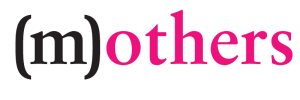
Last week, coming into our bedroom to fold laundry, my husband picked up the hefty issue of Vogue I’d left on the bed and scornfully tossed it aside. “Why did you buy a magazine with Kate Moss on the cover?” He made no effort to hide his disapproval. Why should he? Every good feminist knows fashion magazines are evil.
“Because I wanted to.”
Apparently this was not the answer he was looking for. He scowled at me. I scowled right back. I mocked his derision. He told me to… well, you get the idea. In the end, we avoided a scuffle, but as he pointed out, I can do whatever I want, but I can’t make him like it.
Indeed.
Every August I face the same dilemma: to buy or not to buy the September Vogue. It’s everywhere, taunting me. It calls to me like free samples of Godiva, like Paul Konerko in tight pants,  like an open bar with top-shelf margaritas. I know I shouldn’t and yet… Every August I lose my shit to the fall Vogue.
like an open bar with top-shelf margaritas. I know I shouldn’t and yet… Every August I lose my shit to the fall Vogue.
It’s just so big! So beautiful! So over-the-top glamorous! (The magazine, people.) With cover models swathed in richly hued fabrics, shiny like high-end lip gloss, the September Vogue promises luxury and excess few of us can dream of. That’s the whole point. The September Vogue is all about dreaming. Flipping through its pages, one loses the reality that she has just dropped $4 for a collection of ads, and gains the pretense that she too could spend her days shopping, sipping cocktails with celebrities, and attending charity galas with socialites who are talented and strikingly attractive, but not quite as talented or striking as she.
I have always had a love/hate relationship with fashion magazines, which is why Mr. Irises snarls about them. He’s really just looking out for me. (He’s honestly a very sweet, supportive guy.) But again, it’s my magpie problem – I like shiny, pretty things, and that’s all fashion magazines are. Pretty fluff. Few people read Vogue for the articles (although, at least in Vogue you can expect quality articles, unlike its more salacious counterparts.) Nonetheless, I am aware that when I buy Vogue I’m looking at a magazine which is 90% advertising, promoting products which are at best impractical for most women, and at worst degrading. We all know Vogue offers a very limited vision of what a ‘woman’ can be. I am not thin enough to fit into one single piece of clothing advertised in Vogue, but then, few people are. (Perhaps I could throw one of the photoshoots’ velvet backdrops around my shoulders.) I wear very little makeup. I have never been to Cabo St. Lucas. I’d break my ankles in a pair of Jimmy Choos. But looking at a Vogue, I can pretend, just for a few minutes, that I could stride along the Cabo beach in my Jimmy Choos and Alexander McQueen gown with perfect grace, if I only chose to. (As though I live in small town Indiana because I like cows and corn, not out of necessity.)

For years, knowing Mr. Irises disapproves of such an indulgent, limiting and frankly sexist form of entertainment, I snuck the September Vogue into my house like contraband and looked at it only behind the closed door of my office room. I didn’t like having to defend my interest. Now and then, at other times during the year, I’d have the urge to look through women’s fashion magazines, but I rarely bought them. I could just flip through them in the bookstore. The September Vogue, however, must be purchased. It’s 750+ pages, for heaven’s sake. I can hardly lift it.
Then, a few weeks ago, I saw an old issue of Vogue at my awesome friend Melissa Washburn’s home. (She is responsible for the lovely redesign of my blog. Have a look at her beautiful site featuring her art and design work.) I told her about Mr. Irises’ position, how I never brought women’s fashion magazines home because I didn’t want to debate my odd, decidedly non-feminist affection for them, how I felt guilty for even looking at them. I subscribe to Bitch and Bust. How could I explain the Vogue? She offered up the following point: as long as I am reading with a critical eye, how feminist is it to limit my own enthusiasms based on my husband’s approval?
Indeed.
So this year I carried my 4 lb. September Vogue to the Barnes & Noble counter with pride – not hidden beneath a stack of car magazines like a guy buying a Penthouse. I didn’t even try to hide it from my daughter. (If it’s okay for her to like imaginary dragons, it’s okay for me to like impossible dresses.) And I left it right out in the open, on my bed, where I’d been reading it when the dryer buzzed. And I prepped myself with my non-answer, because I knew he’d ask. Why did I buy it? Because I wanted to. That is feminist enough.
Speaking of Bitch and Bust, I offer Vag Magazine.

A funny, biting send up of pop culture feminist magazines. Produced by The Upright Citizens Brigade Theater, this web series gently mocks those magazines’ sometimes vague, strident, crafty, celebrity-heavy, pop-culture feminism. *Hides knitting behind back* Think Portlandia for feminist mags. “Horses are tools of the patriarchy.”
Indeed.



You must be logged in to post a comment.